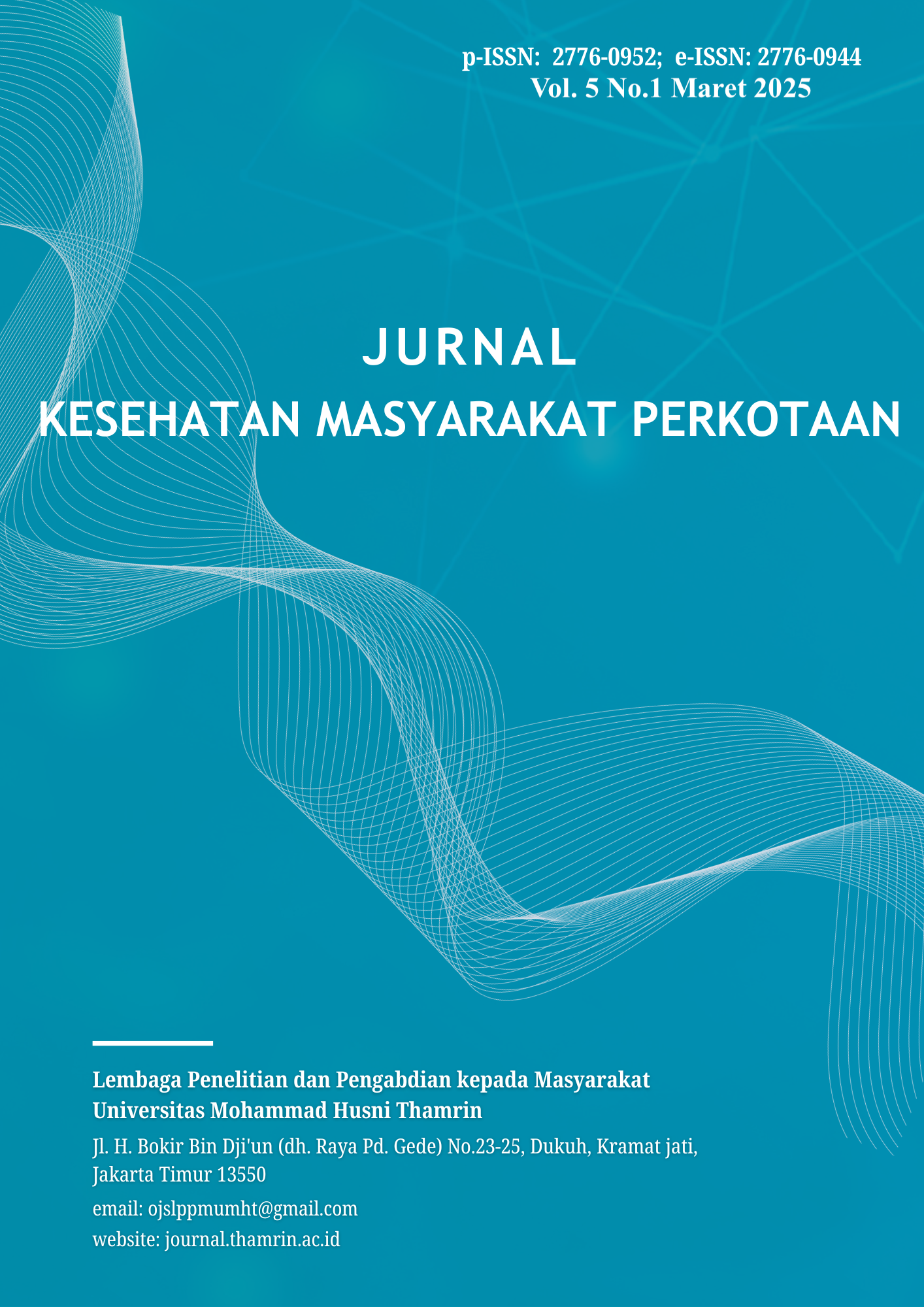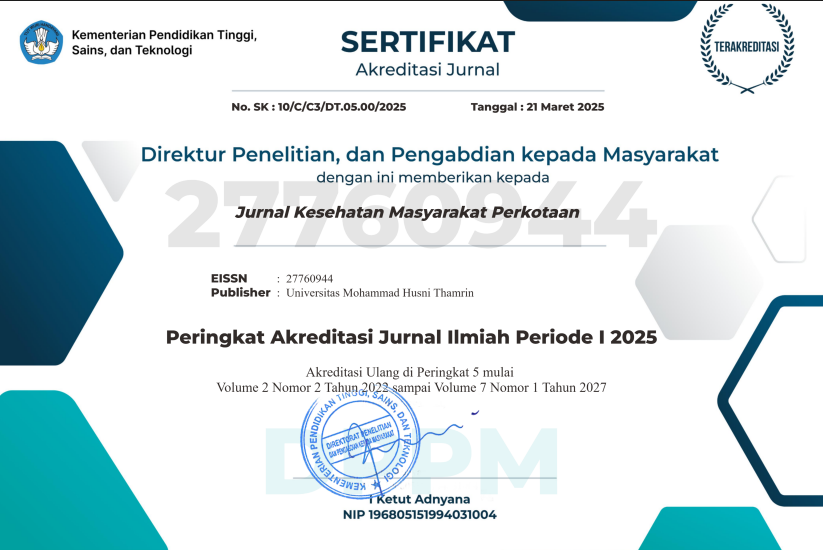The Relationship Between Knowledge about Flood Disasters and Community Preparedness in RW 34, Bojongkulur Village, Bogor Regency
DOI:
https://doi.org/10.37012/jkmp.v5i1.2776Abstract
Background: Flooding is the occurrence of a significant increase in river water flow volume from normal conditions due to continuous rain falling in the upstream area or in certain areas. Flooding is a significant increase in river water flow from normal conditions due to continuous rain, where this often causes a great risk due to the lack of public knowledge about preparedness in facing flood disasters. The purpose of this study was to determine the relationship between knowledge about flood disasters and community preparedness in RW 34, Bojongkulur sub-district, Bogor district. Method: This study uses a quantitative design with an observational analytical method through a cross-sectional approach. The sample in this study was 116 people in RW 34, Bojongkulur sub-district. The instrument in this study was a questionnaire sheet with data analysis using the chi-square test. Results: The results of this study indicate that there is a relationship between knowledge about disasters and community preparedness with a p value of 0.029 (p < 0.05). Of the 116 respondents with good knowledge, more had very good preparedness (78.7%) compared to those with very poor preparedness (21.3%). Conclusion: Respondents with good knowledge have good preparedness. There is a significant relationship between the level of knowledge about flood disasters and community preparedness. The higher a person's level of knowledge, the better their preparedness in facing flood disasters.
Downloads
Published
How to Cite
Issue
Section
Citation Check
License
Copyright (c) 2025 Seven Sitorus, Martha K. Silalahi, Surwaningsih, Alicia Salma Wijaya

This work is licensed under a Creative Commons Attribution 4.0 International License.
Jurnal Kesehatan Masyarakat Perkotaan allows readers to read, download, copy, distribute, print, search, or link to the full texts of its articles and allow readers to use them for any other lawful purpose. The journal allows the author(s) to hold the copyright without restrictions. Finally, the journal allows the author(s) to retain publishing rights without restrictions Authors are allowed to archive their submitted article in an open access repository Authors are allowed to archive the final published article in an open access repository with an acknowledgment of its initial publication in this journal.

Lisensi Creative Commons Atribusi 4.0 Internasional.











